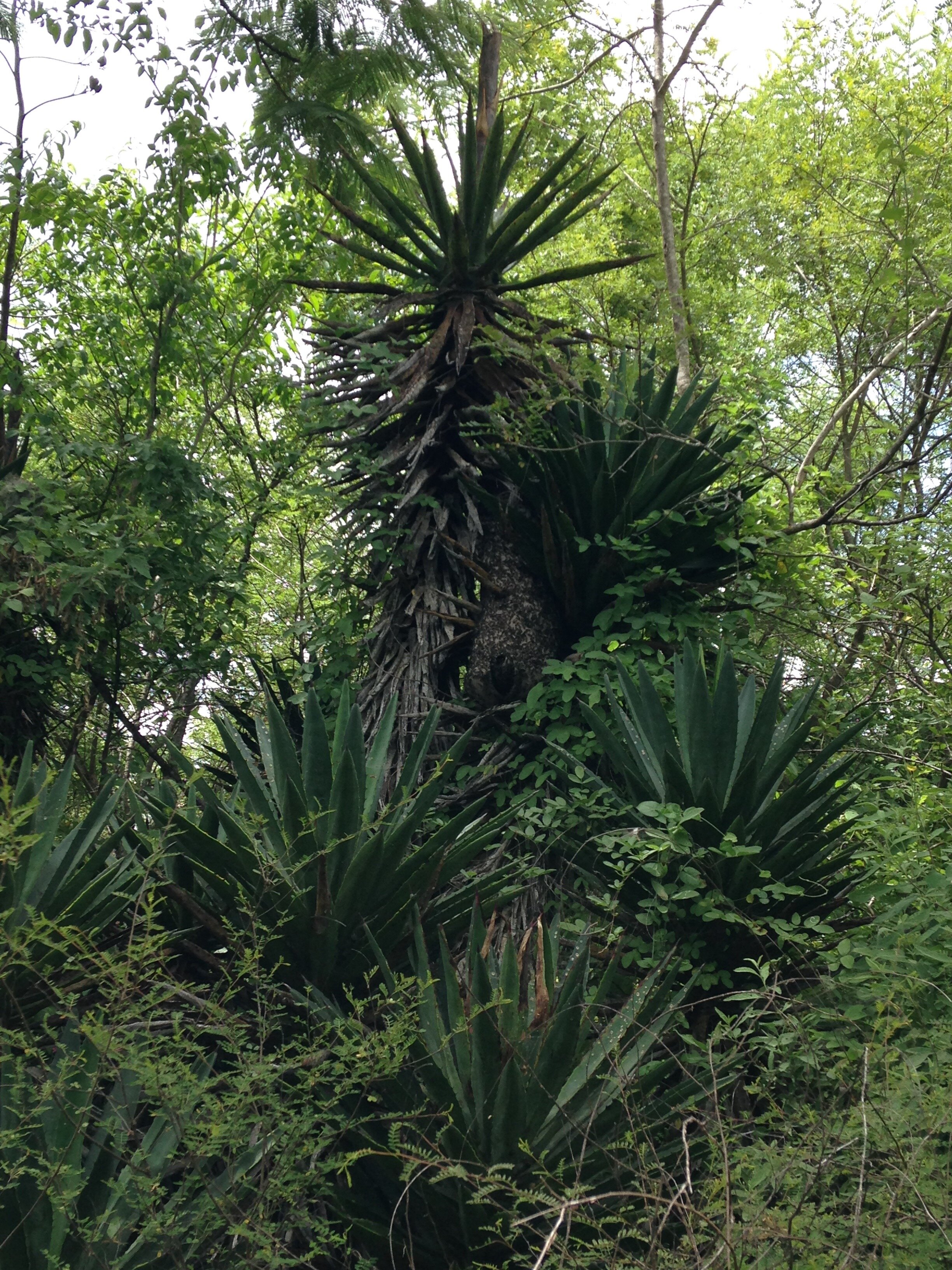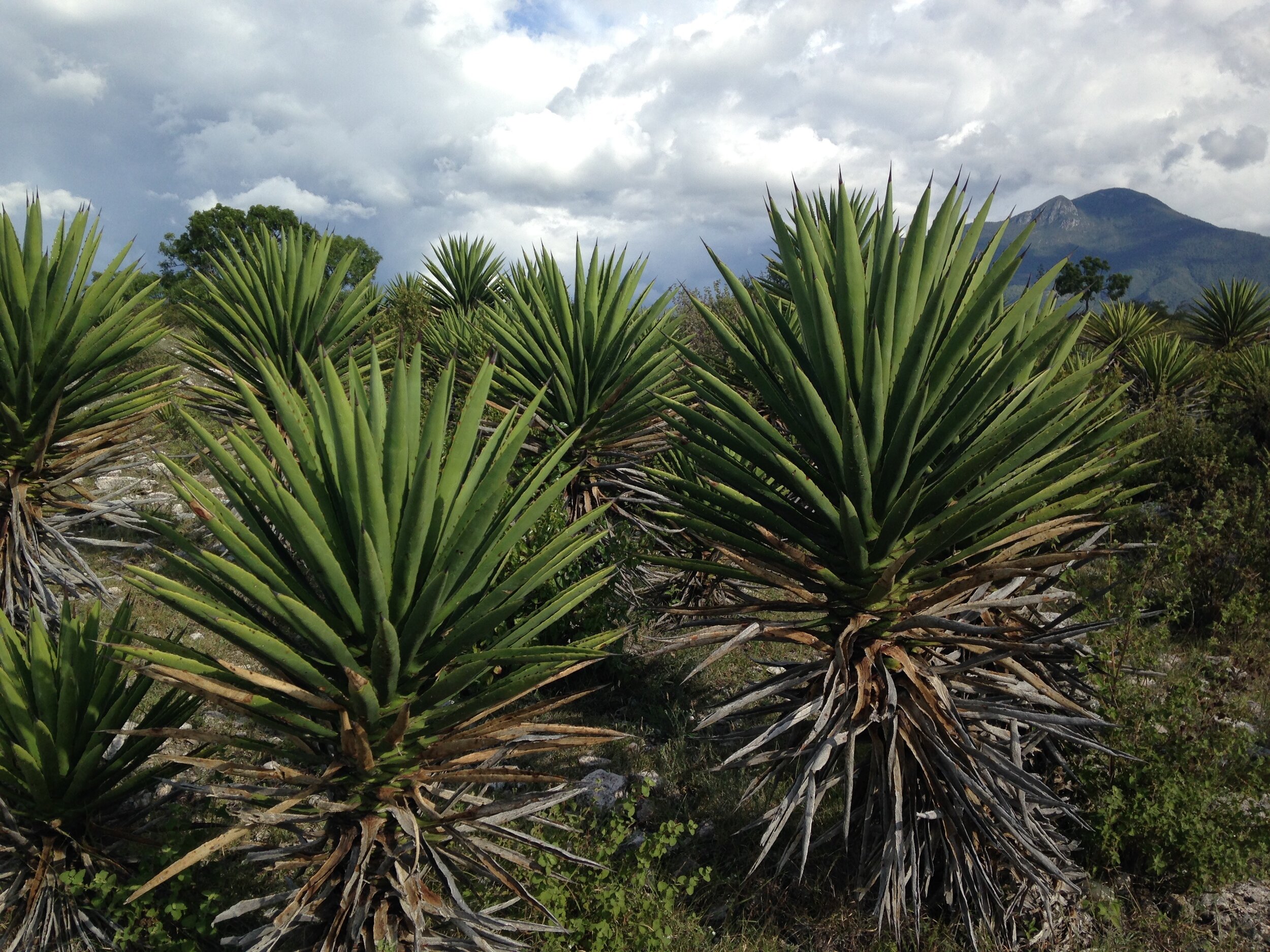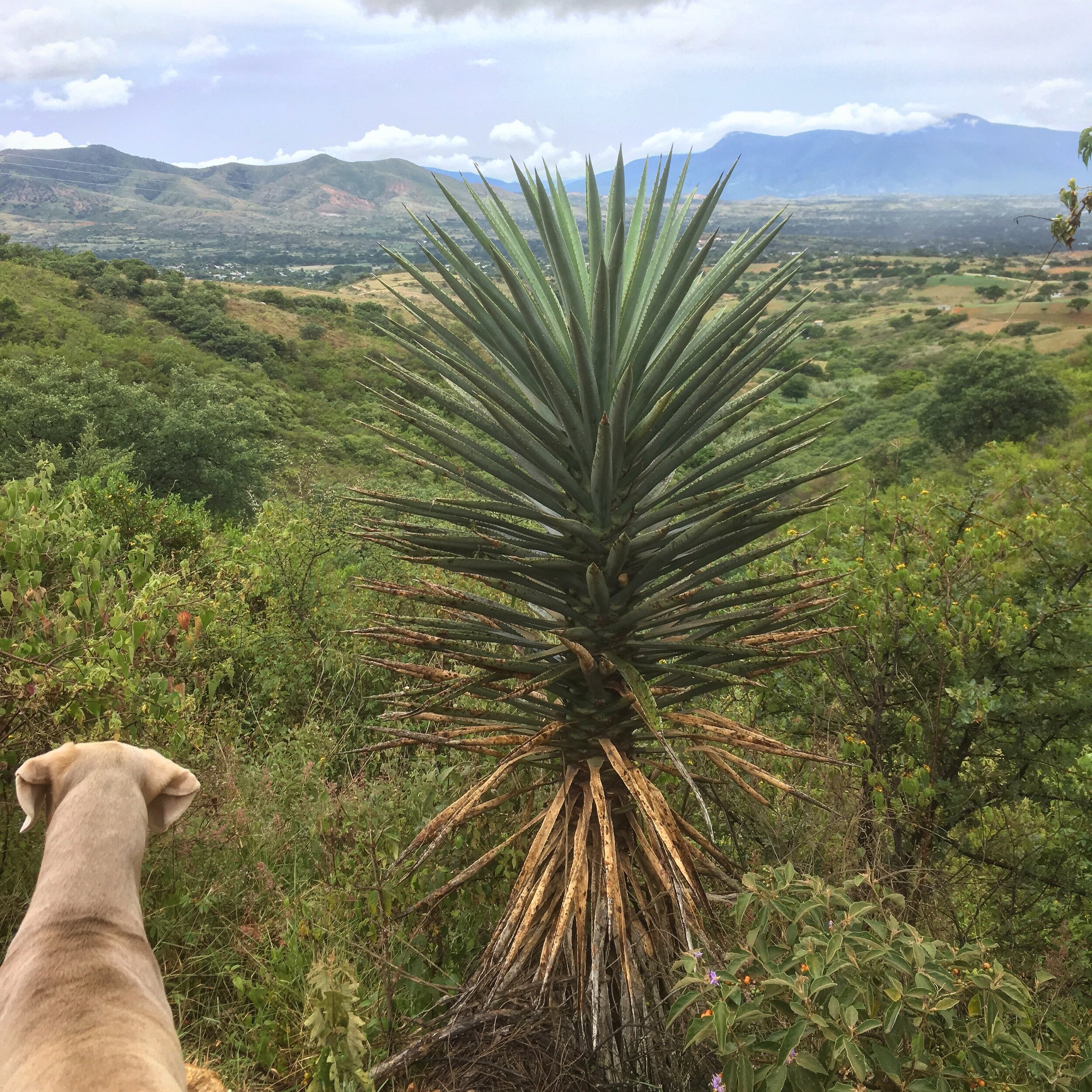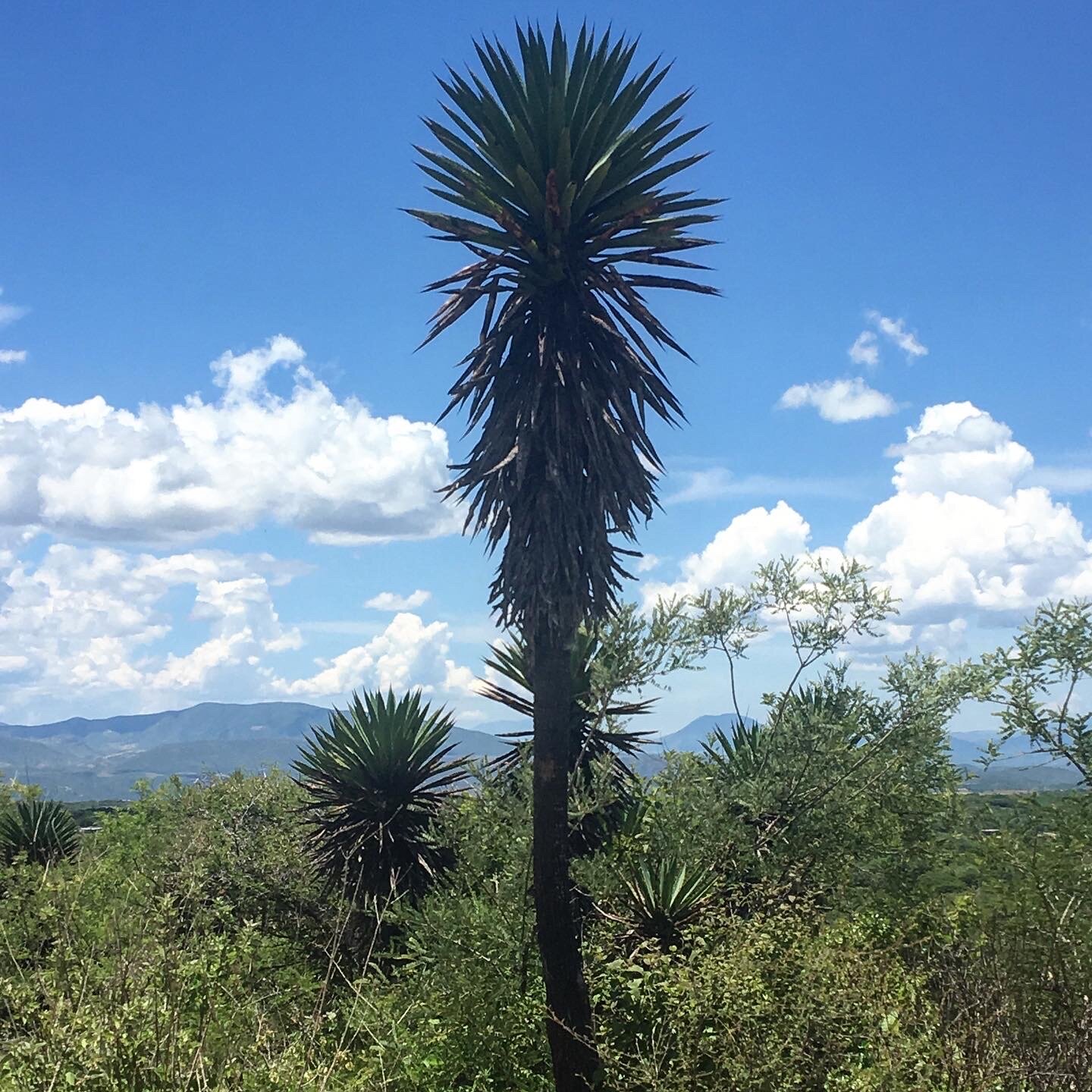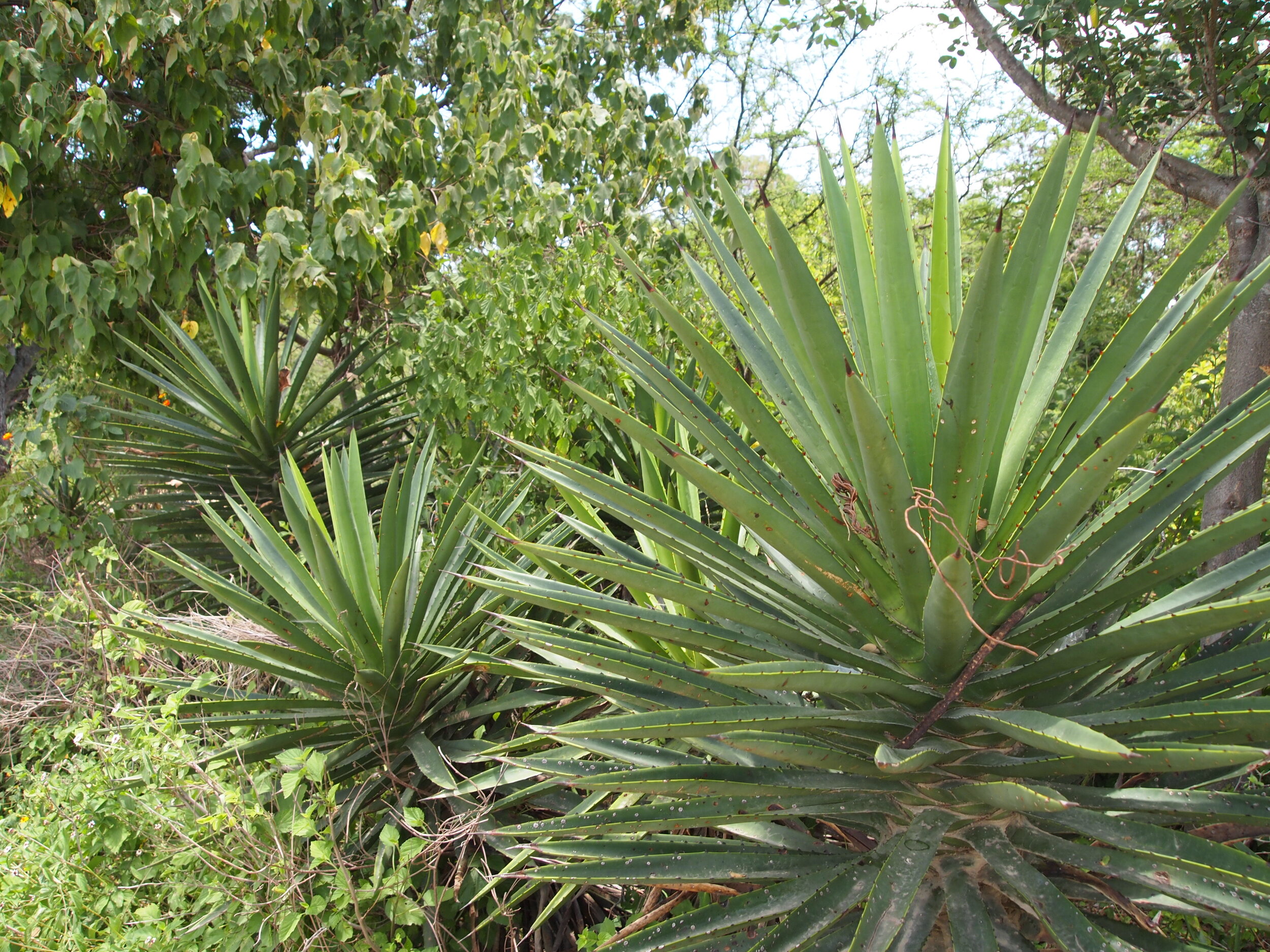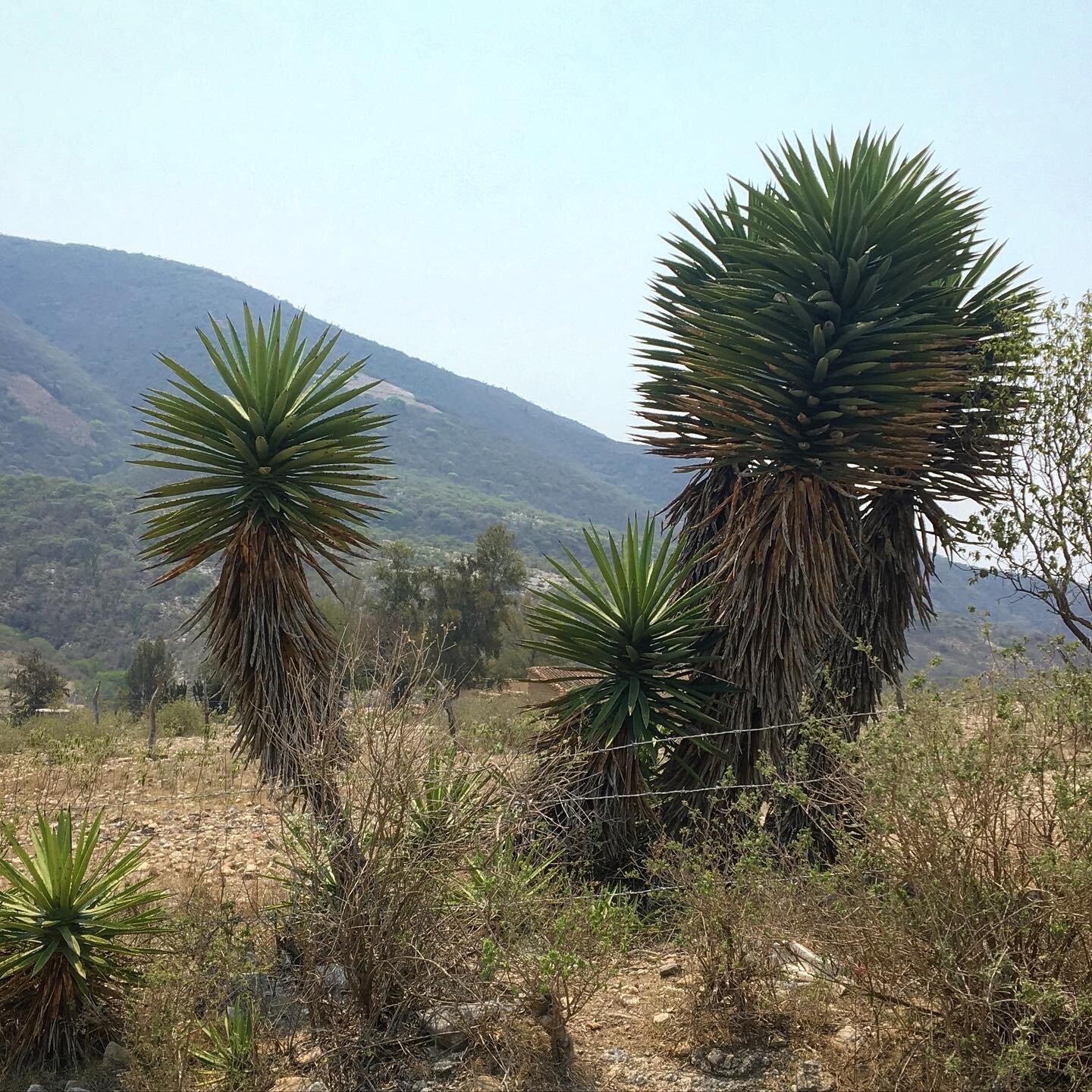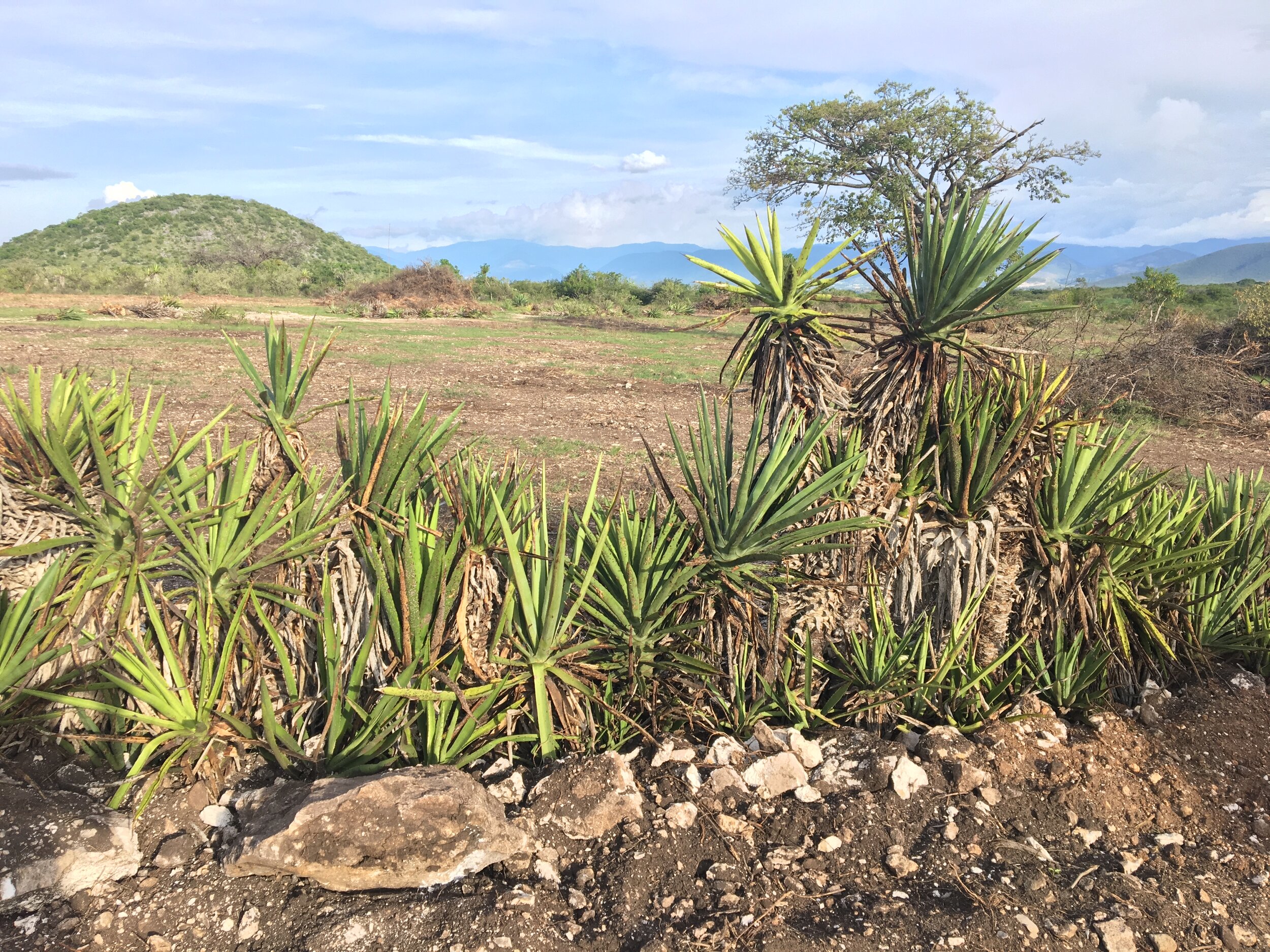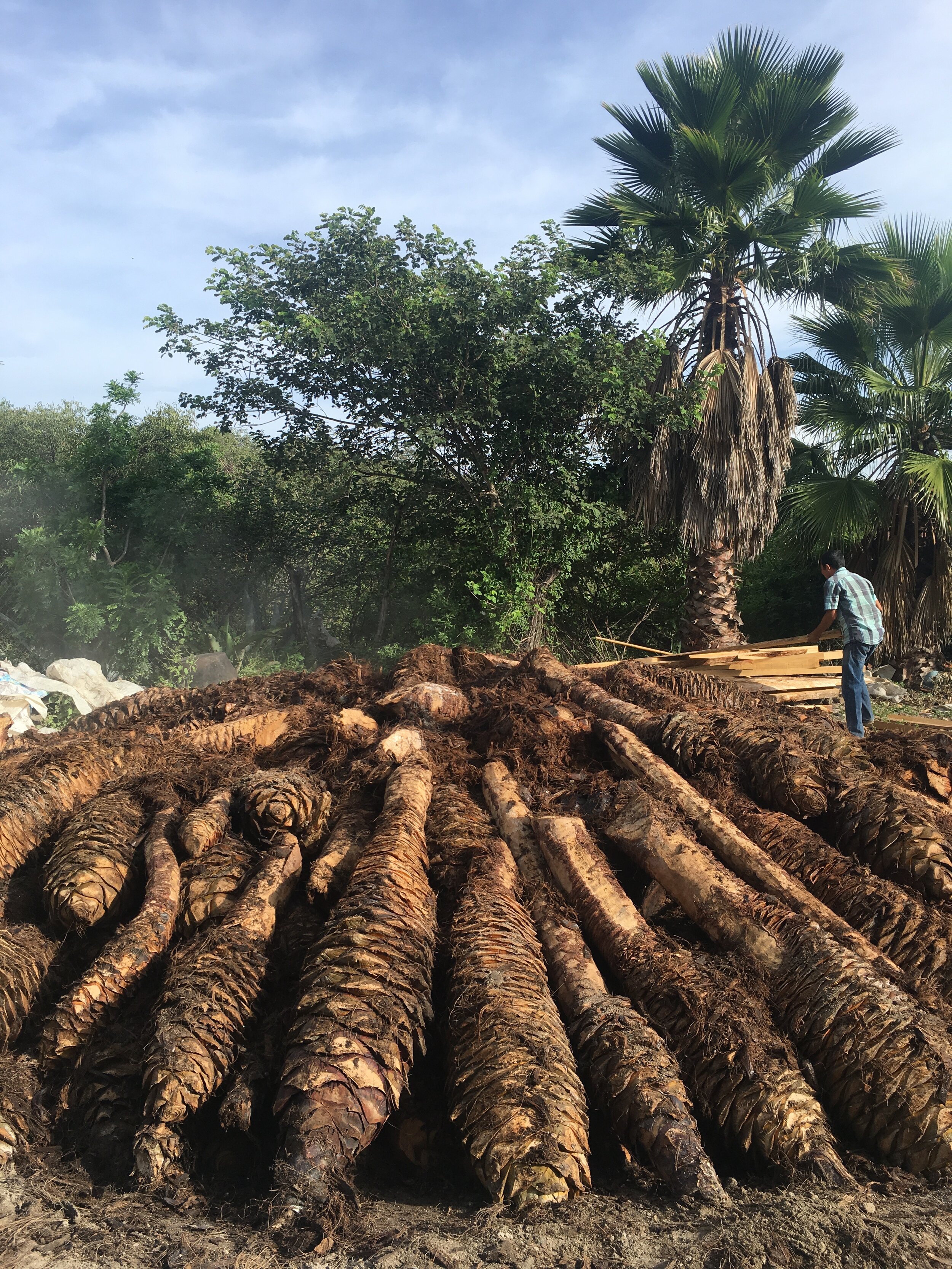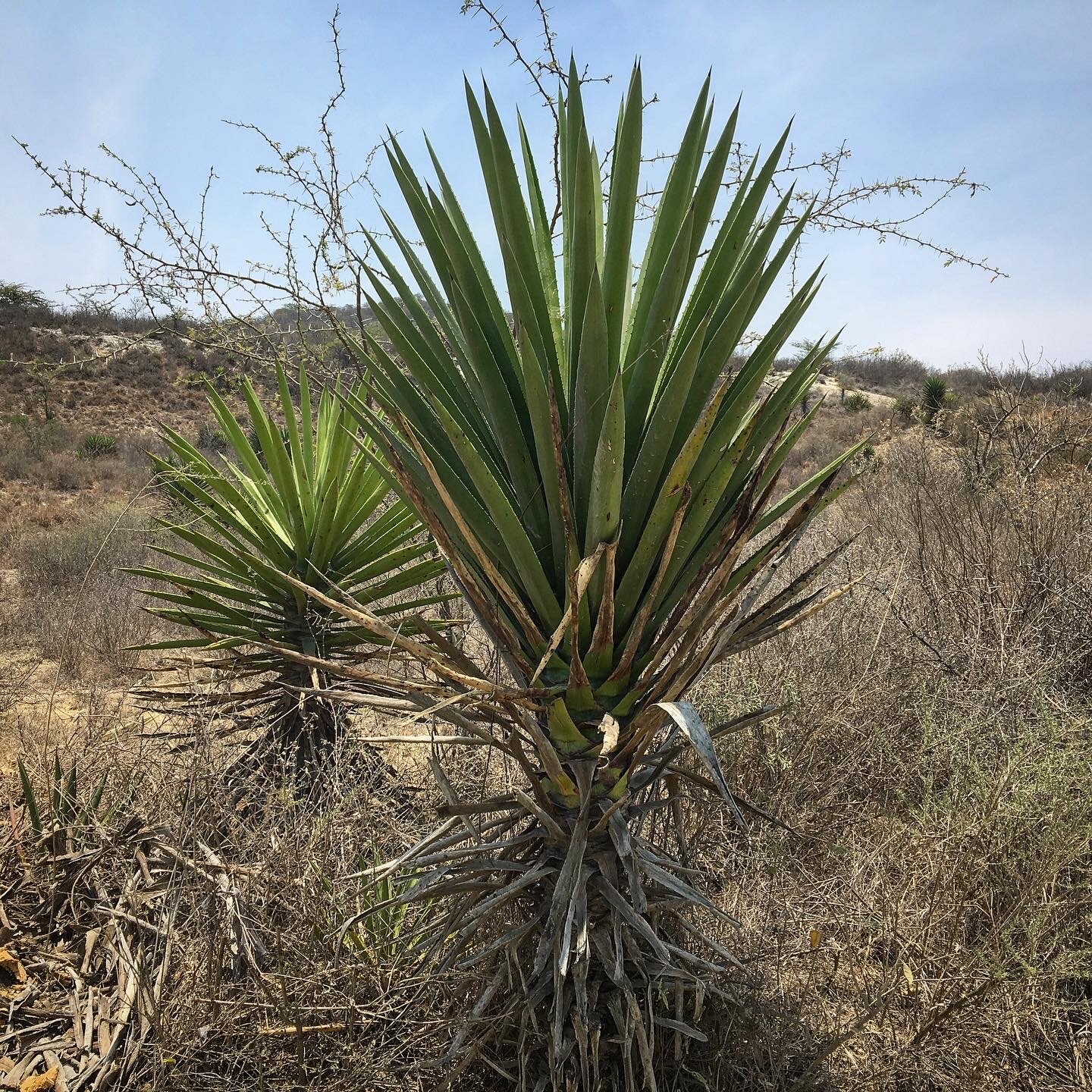Bicuixe (Agave Karwinskii)
In Miahuatlán, the maguey Bicuixe (pronounced bee-queesh or bee-quishay) is perhaps the most prevalent of the micro-endemic Agave karwinskii. While it is primarily a wild species, it could also be considered semi-cultivated as it is frequently transplanted and used to demarcate property lines and prevent soil erosion in the fields. This subspecies is far from uniform in appearance as there are multiple phenotypes and ecotypes, but one of its primary characteristics is its long and relatively thin tree-like stalk, often larger than the actual piña in size. While the Bicuixe piña has a moderate sugar content, they are small in comparison to other A. karwinskii varietals and have a much larger stalk to piña ratio, which can translate into slightly bitter notes, lending the distilled spirit an incredible balance of flavors. The Bicuixe, or Cuixe, as it can also be called in the area, plays such a quintessential role in local mezcal and agave spirits production that it could be considered the most archetypal and definitive expression of the tierras and culturas of Miahuatlán. The names of agaves in Oaxaca, and throughout Mexico, are regionally, culturally, and sometimes linguistically specific and should be treated as such. They are colloquial and can change from village to village and region to region. The Bicuixe found in Miahuatlan is very similar, and perhaps even identical to what is called Tobaziche in parts of the Ejutla valley, the Tobaziche of Santa Catarina Minas, as well as the Cirial from other parts of the Central Valleys.

